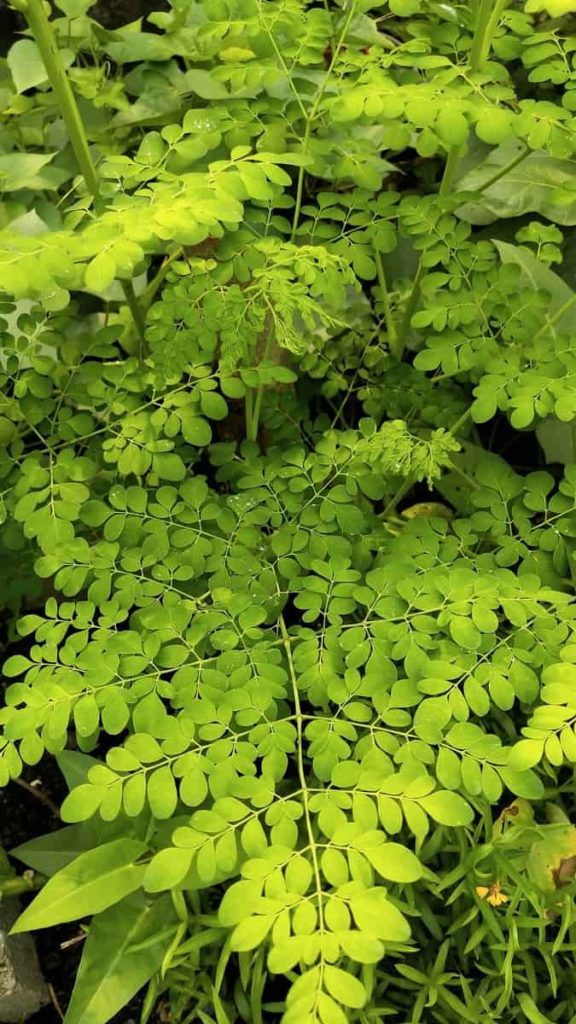The moringa tree is native to warm climes like those found in India, Africa, and other subtropical locations, where it grows and gains its nutritional value. The moringa tree’s fruit and leaves are often very healthy. Moringas have become commonplace in backyards worldwide because of their rapid growth and useful medical properties. Below we learn how to grow moringa trees faster and tips to increase flowering and fruiting.
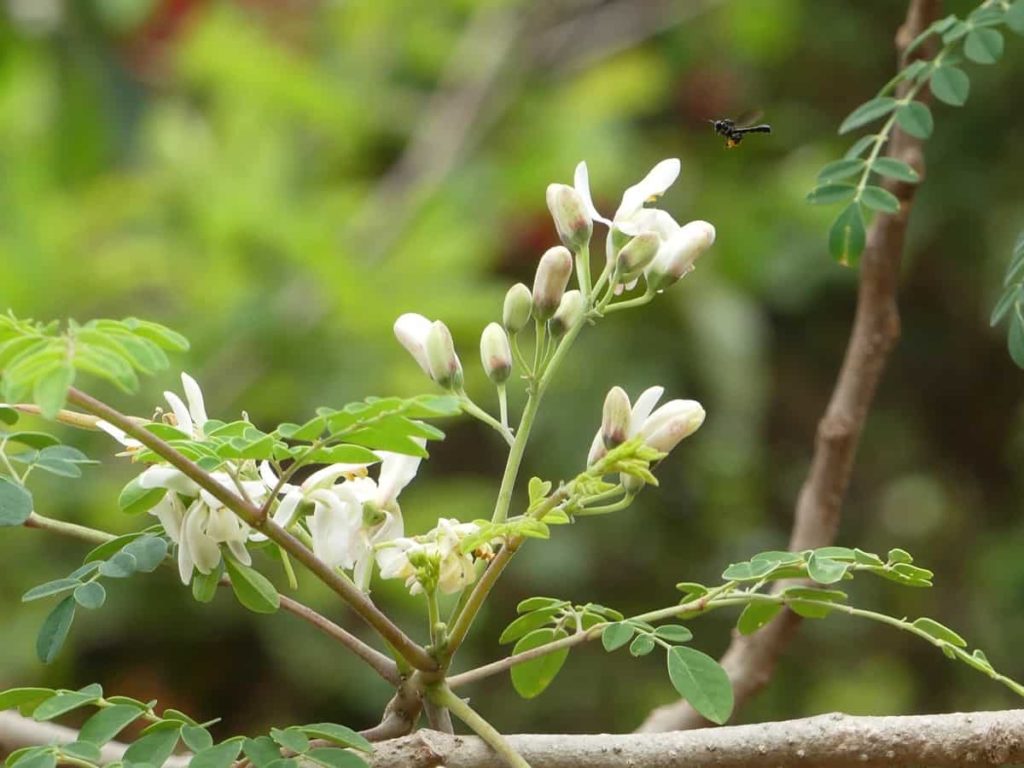
How to grow Moringa tree faster
Maintain adequate temperature
Moringa, which originates in Africa, can survive at very high temperatures. The ideal temperatures for this plant are between 75 and 95 degrees Fahrenheit, although it can survive in temperatures of 100 degrees Fahrenheit or more if given some shade. Unfortunately, Moringa cannot survive under frosty conditions.
Temperatures below 70 degrees Fahrenheit cause it to shed its leaves, while temperatures 50 degrees or below cause it to enter a dormant state. Light frosts won’t harm an established tree, but frozen roots will. Moringa plants grown in pots can be brought inside during the autumn and winter, making this plant suitable for those who live in colder climes.
Soil preparation is vital
The Moringa or Drumstick plant is very versatile. It can survive drought while other plants around it are dying. It can thrive in dry soil but does better in semi-watered soil. Plants can’t thrive in soggy soil, so ensure your gardening soil drains adequately. Well-drained soil for your Moringa plant can be made by combining potting soil and sand. This will make it grow faster.
Be careful while planting
Since it matures into a somewhat big tree, moringa does best when planted directly in garden beds. Moringa trees have massive taproots that need much room to spread in the ground. Keep at least 3 meters of space between moringa plants for optimal development. You can grow Moringas straight in your gardens if the winters do not dip below freezing where you live. Moringa seedlings thrive at soil temperatures between 20 and 26 degrees Celsius. Spread out 5-6 Moringa seeds in each garden bed and bury them at least one inch. Remove all except the strongest seedlings from each planting bed.
In case you missed it: How to Grow Green Chilli Peppers Faster: Best Tips to Increase Flowering, Fruiting, and Production Yield
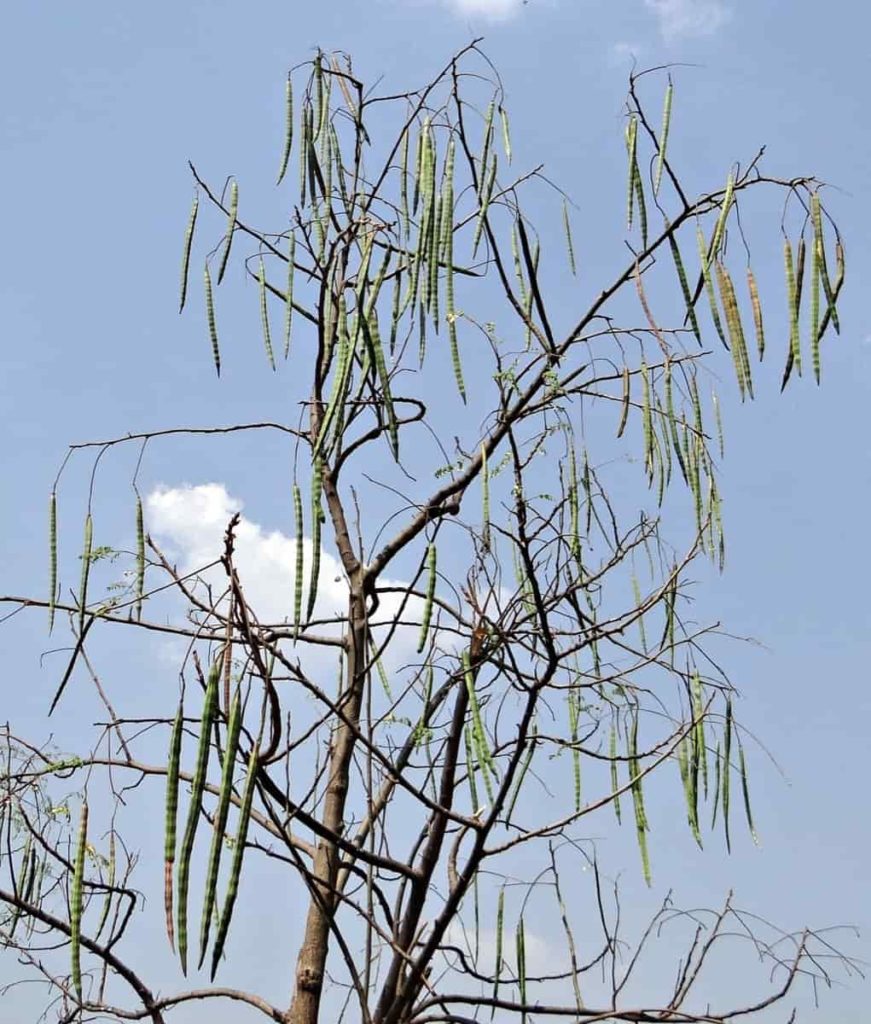
Give plants adequate moisture
Established trees can withstand dry conditions, but they still need regular watering. Remember that these trees are at home in humid rainforests as in dry, desert regions. For optimal development, they need consistently humid conditions. The optimal frequency for watering seedlings is every 2 to 3 days. Use a soaker hose to water the tree thoroughly at its roots. Trees should be watered once weekly if they are mature. Increase how frequently you check the soil’s moisture level as the temperature rises, and water extra if necessary.
Feed your moringa plants
Compost gives plants crucial nutrients when planted. A little application of an all-purpose fertilizer works well for Moringa plants. After an established moringa plant, it does not need to be fertilized often. But if their topsoil is frequently changed with compost or manure, they do well.
Prune your moringa plants
Maintenance trimming of moringa trees keeps them healthy, encourages new leaf development, and keeps them from becoming too big. If left unpruned, Moringa trees will grow very tall, develop numerous branches, produce few leaves, and only bear flowers at the very top of the branches, making harvesting tedious. All parts of the plant, including the roots, flowers, pods, leaves, and seeds, can be consumed by performing routine pruning and promoting branching.
Be careful while potting and repotting your moringa plants
Unless you live in a warm, tropical, or subtropical climate all year, you’ll need to keep your moringa plant inside or in a large container. Moringa plants growing in pots can be brought indoors out of the cold during the winter. While 6- to 7-inch pots are fine for early plants, they have a deep taproot system and will outgrow them quickly. Grow your moringa in a container at least 30 inches in diameter. Be careful to get the plant in a new home before it gets too rootbound to relocate.
Overwinter your moringa plants
No additional care is needed for overwintering an outdoor moringa tree when cultivated in a warm environment. If your trees are in pots, bring them inside before the first frost and set them in a sunny, warm spot.
Control pests and diseases
Moringa trees, once established, can still be a target for termites despite being resistant to many pests and diseases. Mulching the area surrounding the tree’s base with mahogany chips, castor oil plant leaves, tephrosia leaves, or Persian lilac leaves will deter termites. Moringa also attracts other pests, including armyworms, cutworms, stem borers, aphids, and fruit flies.
In case you missed it: How to Grow Isabgol Plants for Beginners: Guide and Steps to Propagation, Planting, and Care
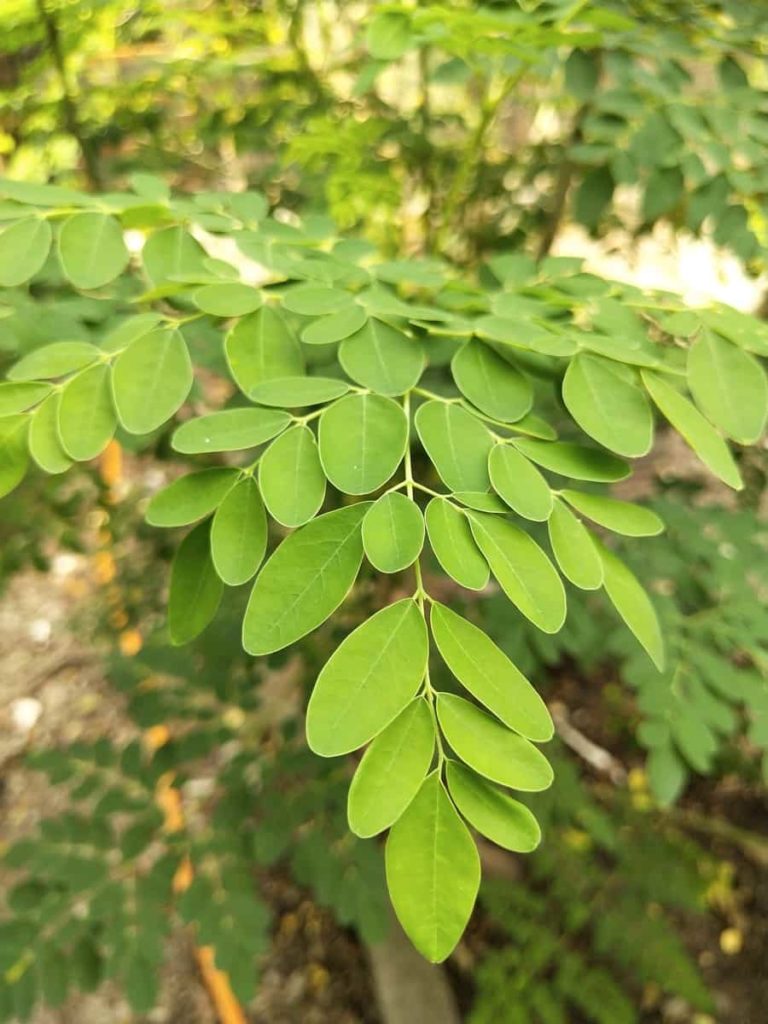
Frequently asked questions about Moringa plants (FAQ)
What is the best fertilizer for the Moringa tree?
You should know your way around fertilizer if you want to grow a moringa tree. Effective fertilizer management complements the soil’s inherent nutrient-supply capabilities. You, the gardener, have as your primary focus the fulfillment of the moringa tree’s nutritional needs. Fertilizer use is minimal for moringa plants. However, plants need enough phosphorus to promote healthy root development throughout the growing phase.
Nitrogen is another vital ingredient that must be supplied in large quantities. Having enough nitrogen in the atmosphere is crucial because it promotes leaf canopy expansion.It is advised to use organic fertilizer while the trees are young. If you must use commercial fertilizer, use a fast-acting kind. Plants’ stems and roots are very delicate. Thus, timed-release fertilizers are recommended. The moringa tree needs phosphorus, nitrogen, potassium, and zinc to thrive.
The tree’s sophisticated root system, developed through time, allows it to draw nutrients from a vast region as it ages. In addition, once a year of fertilization is acceptable as they have reached maturity. But if a soil test reveals that your soil is deficient in nutrients, you will need to apply fertilizer.
Outdoor moringa plants benefit greatly from being fertilized with chicken dung. Using chicken dung and biochar together has been shown to increase crop yields. One pound of manure per five liters of soil is recommended if the moringa plant is grown in a container. To fertilize your crops, utilize the manure from your ship and goats, which includes 3% nitrogen, 1% phosphate, and 2% potassium.
How long does it take for moringa to grow from cuttings?
Growing a moringa tree from a seed or a cutting is simple. They flower within eight months after being planted, regardless of the quality of the soil. Every year when the trees cease bearing fruit, a portion of the canopy must be pruned to make room for new growth. You can use these limbs to start new trees.
How often should moringa be watered?
There’s a good reason why moringa is sometimes called “natural nourishment for the tropics.” These trees thrive when given enough heat and light. If you live in a cooler region, it is recommended that you start your moringa tree inside and transfer it to your outdoor space after the temperature reaches around 70 degrees.
Some plants even wrap their moringa trees with Christmas lights to keep them cozy, as reported to us. Moringa plants have a high initial water need. Keep them moist every day until a seedling appears, after which you may reduce the frequency of your waterings to every other day. When they reach around 18 inches, you can reduce the watering frequency to once weekly. In the right conditions, these trees can reach heights of 20 feet.
Why is my Moringa tree not growing?
Because of this, moringa should be kept warm. If temperatures drop below roughly 15C, its growth will essentially stop, and it may even die. After the first year, the tree’s cold resistance will rise, but you must still protect it the first year.
What type of soil does moringa like?
Moringa prefers somewhat acidic, well-drained soil (pH 6.2–7). The best soil for gardening is a rich loam that has been amended with lots of compost and well-aged manure. It should be planted on a mound in high-rainfall locations so water can flow away from the roots. Moringa can survive in somewhat dry conditions.
In case you missed it: Top 25 Tools for Gardeners: Uses, Functions, and Care
But if the soil retains water for a long time after rain or watering, the plant will swiftly exhibit indications of suffering and death. After a year or two, it can live on rain alone. When plants are contained inside containers, their roots are restricted from penetrating the soil deeply in quest of water. When watering a potted plant, ensure the soil can drain freely, then wait until the top 15 to 20 centimeters of the soil has dried out before doing so again.
In late winter and summer, you should apply a controlled-release fertilizer to your fertilizer twice a year. To learn the proper dosage, follow the directions on the label. Water-soluble or liquid fertilizers can be applied to trees between the spring and the end of summer. As a mulch in the spring, spread compost and aged manure over tree roots in the garden.
Why are moringa leaves turning yellow?
Overwatering or underwatering can cause the leaves of a moringa tree to turn yellow. Insufficient sunshine or a deficiency in vital nutrients can also cause them to be yellow. A spider mite infestation can also cause the leaves to become yellow. The moringa tree leaves become yellow for various reasons, but most often because the tree cannot absorb the nutrients from its roots.
Be careful while watering your plants. Damage to plants may result from overwatering. Root rot can be attributed to this mostly. When plants spend even a few days in soggy soil, their leaves turn yellow. When leaves become yellow and die, they fall off the plant. Be careful while watering your Moringa plants. Only slightly damp soil is ideal, and they grow well in that environment. Before you water, you should feel the soil to be sure it needs it.
In case you missed it: How to Grow Cucumber Plants Faster: Best Tips to Increase Flowering, Fruiting, and Production Yield
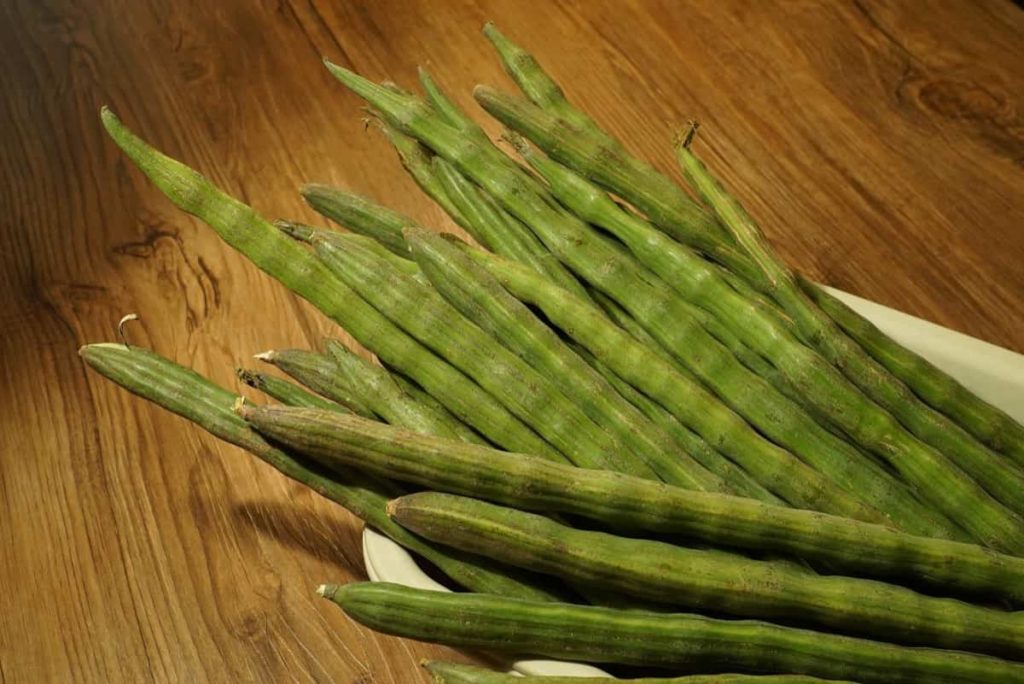
Check that the soil drains well. This kind of soil is necessary to prevent flooding. Attempt to improve circulation by clearing away diseased or otherwise ineffective roots or rootlets. An overwatered plant can suffer much more damage if fertilizer is applied. Remove any withering or dead leaves. Be sure your plants never get thirsty by giving them plenty of water. Since moringa trees need consistently wet soils to flourish, this is an absolute necessity. If necessary, use your fingertips to probe the ground.
To ensure success, the soil should be kept wet to one inch. A sprinkler or soaker hose makes watering a lot less of a hassle. Because their roots dry up, plants under water can’t absorb as many nutrients. Therefore, they cannot establish chlorophyll in the leaves, resulting in the leaves becoming yellow. When this happens, the leaves on the plant will fall. Give the plant much water. Once the leaves have become crispy, they cannot be saved. The new growth should be robust. Check the soil with your fingers and water it when it feels dry one inch below the surface.
Does moringa need acidic soil?
Moringa trees can only flourish in sandy or loamy soil with good drainage. Though they are known to thrive in various conditions, clay or damp soil is not ideal for these trees’ growth. A two- to three-inch layer of compost or composted manure around the plant’s base will do to amend the soil before planting. A slow-release, balanced fertilizer should be used in time for optimal development. The ideal soil pH for a moringa tree is between 6.5 to 7.5, which is slightly acidic to neutral. Mixing in some peat moss might assist if your soil is too alkaline.
Where should I plant a moringa tree?
Moringa trees thrive in warm environments (77–86 F/25–30 C) and can withstand brief winter periods. Moringa grows well on neutrally-pH’d well-drained sandy or loam soil. Though it can grow in clay soil, the soil must not always be soggy. Get the tree into a nice, sunny spot. Moringa seeds must be planted 2.5 cm deep and cuttings 1 foot deep (31 centimeters). Keep a distance of roughly 5 feet (1.5 m) between rows of trees.
Seeds often germinate in a week, and cuttings take root simultaneously. Care for an established moringa tree is minimal. Apply a standard houseplant fertilizer and plenty of water once you’ve planted. The seeds and cuttings must not be submerged in water, or they will decay. Remove any weeds or pests from the planting location, then use a hose to wash the tree’s leaves and trunk.
Trimming dead or diseased branches from a mature tree may stimulate fruit production. To promote fruiting in subsequent years, it is recommended that first-year blooms be removed as they blossom. This fast-growing tree may be kept in check by yearly trimming to a shrub shape. The tree can be lopped down to the ground or around 3 or 4 feet (1 m).
In case you missed it: Vegetable Growing Season Chart in India: Sowing Guide, Germination and Planting Calendar
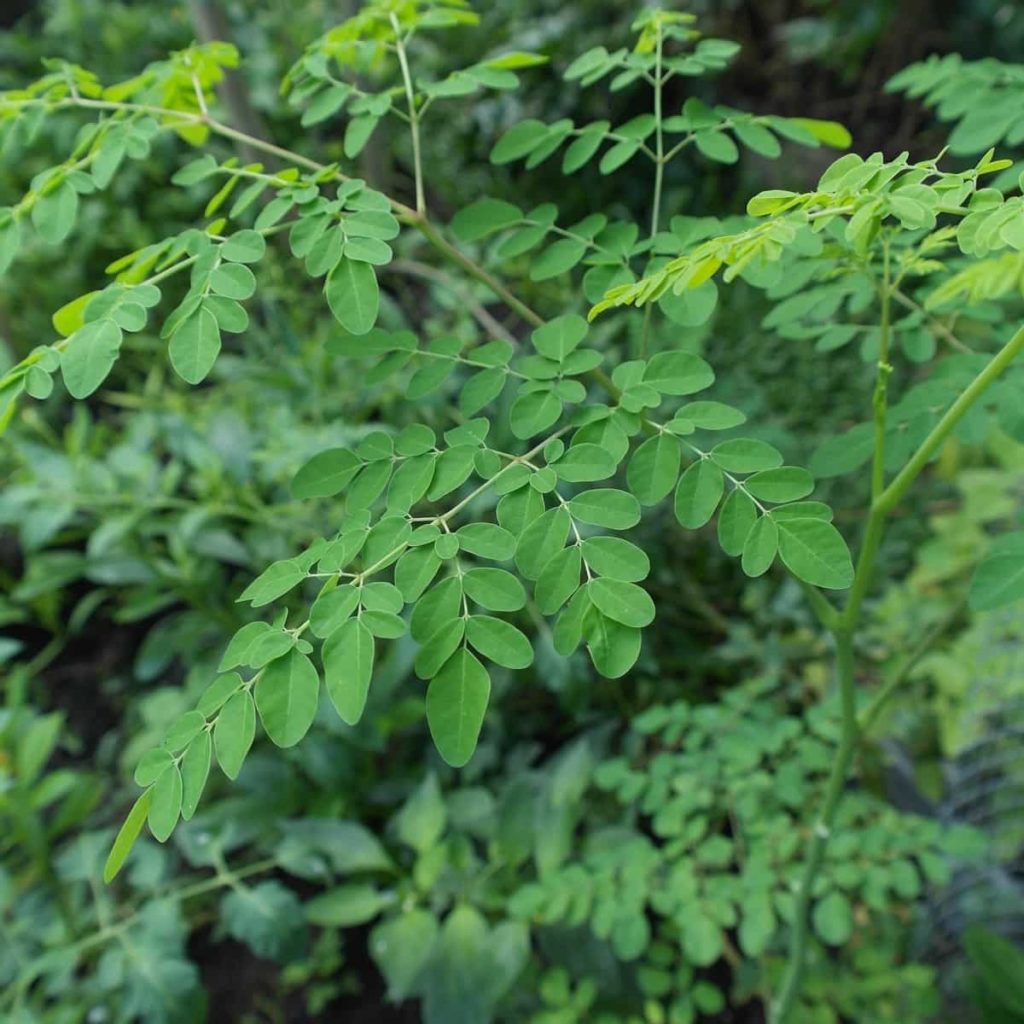
Conclusion
The Moringa family includes more than 13 species, many of which have edible or therapeutic properties. Maintenance trimming of moringa trees keeps them healthy, encourages new leaf development, and keeps them from becoming too big.
- Sheep Farming Business Plan for Beginners
- Aquaponic Farming at Home: A Step-By-Step Guide
- Profitable Village Farming Business Ideas in 2024
- High-Yield Aquaculture: Fast-Growing Fish for Farming
- Effective Fish Pond Construction Techniques for Beginners
- Irrigation and Water Management in Pineapple Farming
- Blossom to Harvest: Mastering Flowering and Pollination in Papaya Farming
- Pig Fattening Essentials: From Selection to Sale for Beginners
- Raising Wagyu Cattle: A Complete Guide for Premium Beef Production
- Soil Types and Their Water Holding Capacity
- Optimizing Irrigation Schedules for Coconut Groves for Enhanced Yield
- Espresso Your Garden: Coffee Grounds for Healthier Acid-Loving Plants
- The Best Soil Mix for Snake Plants: How to Mix Your Own Snake Plant Soil
- Green Thumb Success: Expert Tips for Cultivating Greenhouse Beans All Year Round
- Bloom All Year Round: The Ultimate Guide to Indoor Hyacinth Care
- Eco-Friendly Gardening: How to Make Liquid Fertilizer from Kitchen Waste
- Ultimate Guide to Grow Anise in Pots: Explore Seed Propagation to Harvesting
- Guide to Raising Chester White Pigs: Discover Breed Facts to Growth Management
- Mastering the Elegance: The Ultimate Guide to Weeping Cherry Tree Care, Planting, and Maintenance
- Ultimate Guide to Planting Garlic in Grow Bags: Growing Strategies for Beginners
- How to Fix Spider Plant Leaf-Related Problems: Natural and Organic Remedies
- 10 Reasons Why Your Tulsi Plant is Shedding Leaves: Home Remedies and Solutions
- Optimizing Growth and Yield: The Advantages of Palm Bunch Ash Fertilizer
- Utilizing Neem Oil Extract as a Natural Pesticide for Hydrangea
- From Soil to Harvest: Various Ways in Which Farmers Can Use AI Tools
- Steps to Encourage and Induce Citrus Flowers: A Comprehensive Guide
- How to Fix Snake Plant Leaf-Related Issues: Natural and Organic Remedies
- Transform Your Garden into a Fragrant Oasis with Raat Ki Rani (Night Blooming Jasmine)
- Discover the Ideal Chicken Breeds for Philippine Farms
- How to Create a Poultry Egg Farm Business Plan for Profits
- Grow Lemon Cucumbers Like a Pro: Insider Techniques for Bountiful Yields
- Ultimate Guide to Caring for Your Pink Princess Philodendron: Tips for Thriving Variegation
- Areca Nut Profit Per Acre: Calculating Yield and Cost of Cultivation
- How Kaveri Chicken is Becoming a More Profitable Breed in Indian Backyards
- Transform Your Barn: 9 Steps to Convert a Horse Stall into a Chicken Coop
- Exploring Suffolk Sheep Disadvantages with Limitations and Challenges

